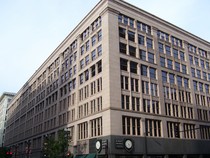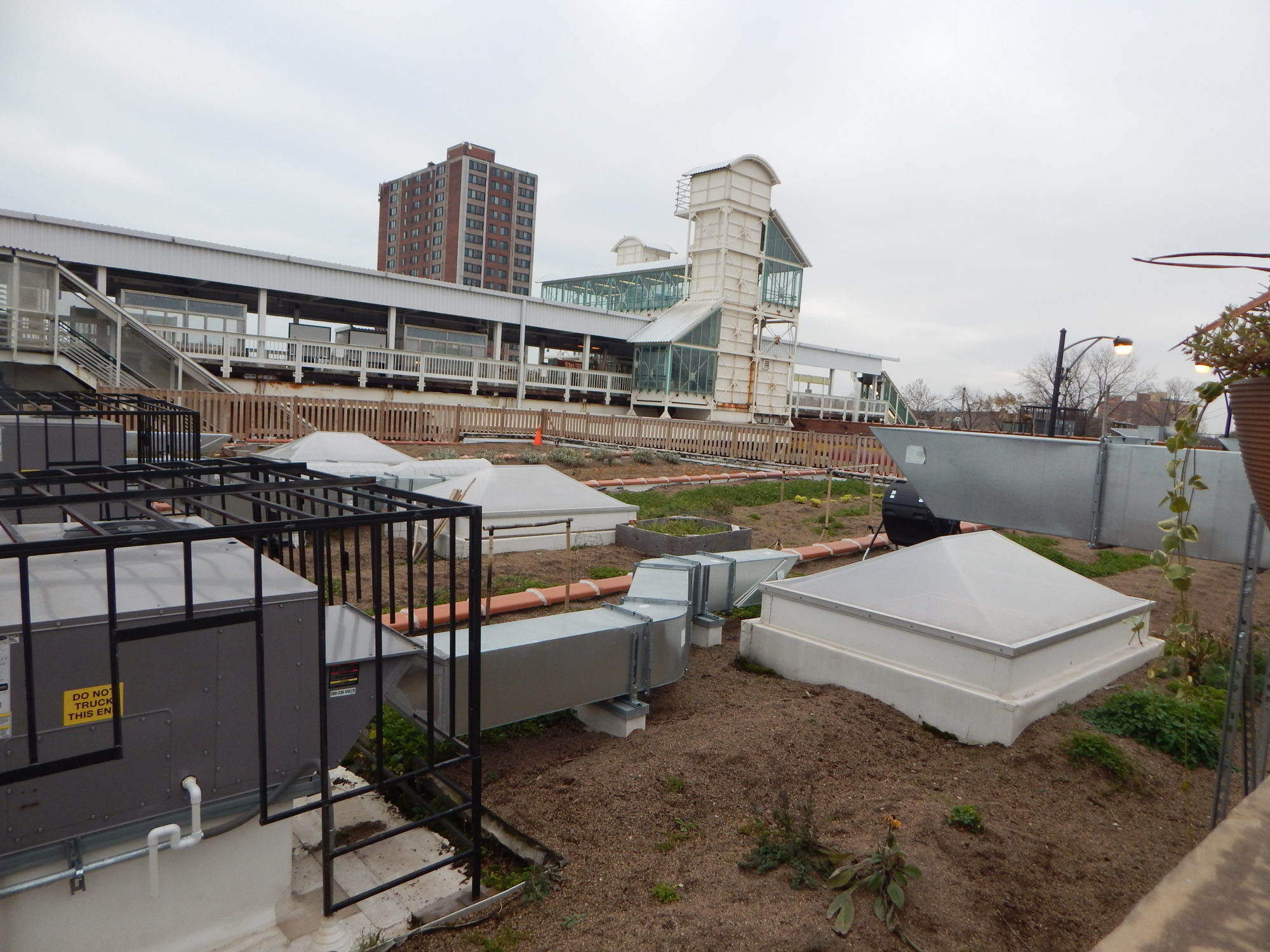
Photo Credit: Audrey F. Henderson — all rights reserved.
Stand on the southwest corner of Congress Parkway and State Street and look north and east to see past, present and future standing face-to-face on a truly great corner of State Street (that great street). To the east, the deceptively unassuming Second Leiter Building, which achieved national landmark status in 1976 and is now home to Robert Morris University, has anchored its corner for 120 years.
Constructed in 1891 to house a single retail establishment or several, for years Leiter II served as the flagship location of what was once the world’s largest store, Sears Roebuck and Company. The exterior walls of Leiter II are absent the elaborate embellishments that adorn, and date, many of its contemporaries. Instead, its forward-looking exterior foreshadows Modernism in expressing its innovative-for-its-time skeletal steel frame support system. Its designer, William LeBaron Jenney, is widely credited with developing the skeletal steel frame construction method that made skyscrapers structurally possible.
Across the street, the post-Modern Harold Washington Library Center, constructed a full century later in 1991, reflects and reveals Leiter II for what it truly is — a stroke of architectural genius decades ahead of its time. The library, named for the late Harold Washington, who served as the first African-American mayor of Chicago, unapologetically recalls the history of the city through its referencing of Chicago architectural icons in its exterior ornamentation while employing modern construction materials and techniques.
This post was previously published on the Chicago Examiner.com website.
